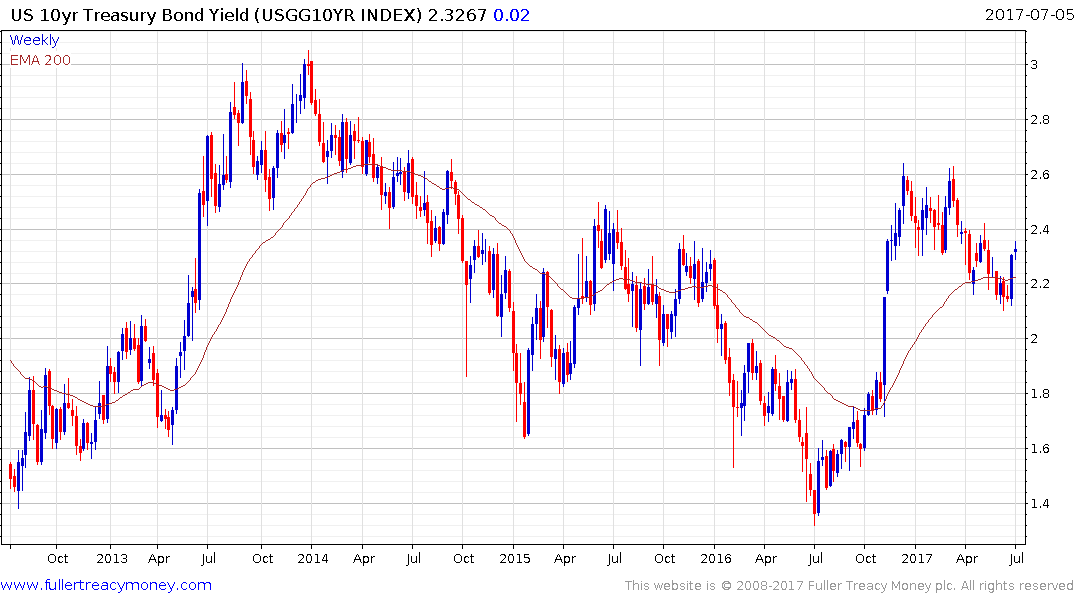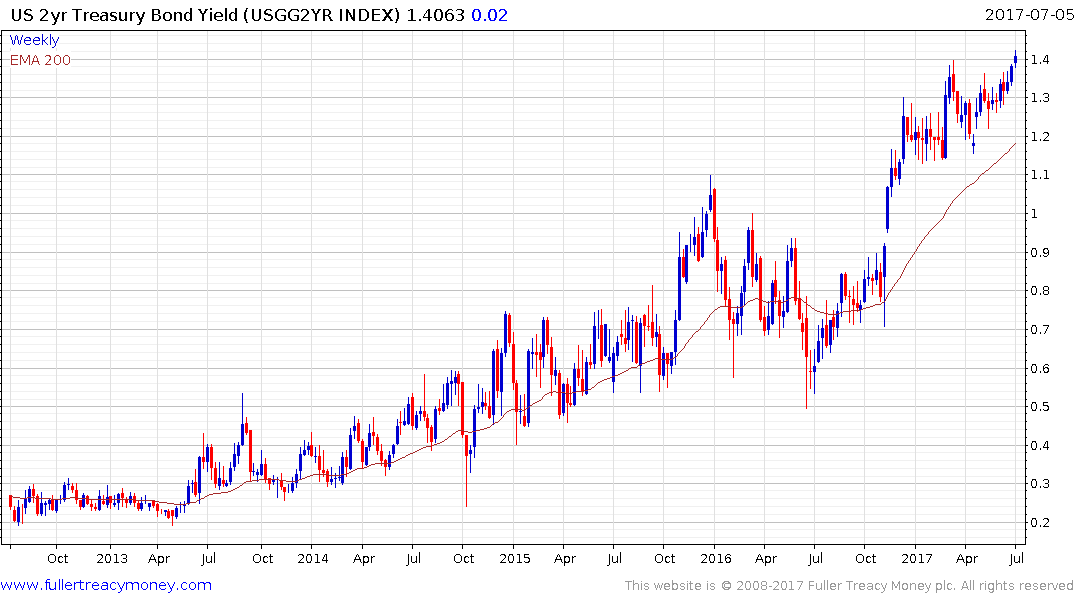Fed Officials Divided on When to Begin Balance-Sheet Unwind
This article by Craig Torres for Bloomberg may be of interest to subscribers. Here is a section:
“Several preferred to announce a start to the process within a couple of months,” the minutes of the June 13-14 meeting released on Wednesday in Washington showed. “Some others emphasized that deferring the decision until later in the year would permit additional time to assess the outlook for economic activity and inflation.”
U.S. central bankers in June raised the benchmark lending rate for a second time this year to a range of 1 percent to 1.25 percent, while describing monetary policy as “accommodative” in their statement. They reiterated their support for continued gradual rate increases, according to the minutes.
Fed officials updated their balance-sheet policy in the gathering, laying out a path of gradual reductions with caps. The central bank wants to start winding down the $4.5 trillion bond portfolio without roiling longer-term interest rates, while gradually raising the policy rate. The minutes indicated that the committee wants to begin the balance-sheet process this year.
Here is a link to the full text of the Fed’s Minutes.
The only example we have of withdrawing liquidity following a bout of quantitative easing is from the ECB between 2012 and 2014 when they took €1 trillion out of circulation. That resulted in deflationary pressures picking up and forced a change of emphasis in Frankfurt which has subsequently seen the size of the balance sheet more than double. Against that background it is hardly surprising there is some disagreement about how to proceed within the Fed and the consensus, as Janet Yellen stated last month, would be to proceed slowly.

US Treasury yields have bounced from the region of the trend mean and are now testing the progression of lower rally highs evident since early this year. A sustained move above 2.4% would signal more than a temporary return to supply dominance.

Meanwhile at the shorter end of the curve 2-year yields broke out to new recovery highs yesterday, to complete a three-month range; suggesting greater willingness to price in the potential for additional rate hikes.


